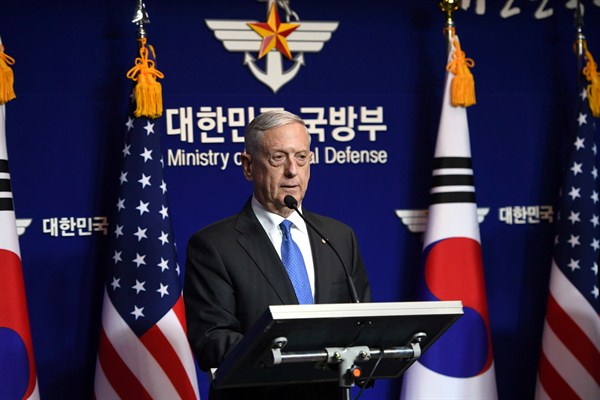Over the past few months, the Trump administration has reportedly been mulling a limited, preventive military strike against North Korea, what has been called the “bloody nose” strategy. Pushed hardest by President Donald Trump’s national security adviser, Lt. Gen. H.R. McMaster, it is based on the belief that if North Korea has the ability to strike the United States with nuclear weapons, Washington would be deterred from intervening on the Korean Peninsula, thus allowing Pyongyang to step up its aggression against South Korea and other nearby nations. The only way to prevent this scenario, the thinking goes, is a military strike against North Korea that doesn’t eliminate its missile and nuclear weapons facilities entirely, but signals American intent to keep Pyongyang’s nuclear program in check. The U.S. gives Pyongyang a “bloody nose” without provoking an all-out war.
Understandably, this idea has met vociferous opposition given the risks of escalation and retaliation, especially against America’s ally, South Korea. The editorial board of The New York Times, for instance, accused the Trump administration of “playing with fire and fury.” Mira Rapp-Hooper has argued in The Atlantic that “the Trump administration’s use of preventive force would be a suicidal reaction to uncertainty.” Peter Beinart has slammed “Trump’s reckless pursuit of a military solution to a problem that has none.” And this is only a small sample of the passionate indictments hurled at the “bloody nose” strategy, all stressing its danger.
In one sense this is right: Even a limited U.S. military strike against North Korea would have the potential to spiral out of control in large part because it is impossible to predict how North Korean leader Kim Jong Un would react. But at a deeper level, the peculiar, even paradoxical, logic of deterrence is at play. Counterintuitively, the more willing the U.S. is to use military force against North Korea, the less likely it is to have to do so.

